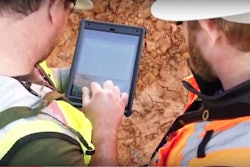
By Don Talend, Contributing Editor
Contractors can enjoy major project collaboration benefits at very low cost using cloud-based project management information systems. Cloud software and users’ data reside on the software provider’s servers. Customers access it via the internet with almost any type of connected computer.
Here’s how three construction contractors are making quantum leaps in operational efficiency and IT infrastructure savings using cloud software. Real-time project data that all stakeholders can access from anywhere are accelerating decisions and construction while boosting data security and profit.
Cloud Subscription Costs a Fraction of Data Centers
EYA, a luxury townhome builder in the Washington, D.C., area, began using Procore’s cloud-based project-management system in 2013. Digitizing paper documents and centralizing them in online project files makes managing projects much easier, notes Director of Technology Pete Zafros.
Not only is EYA producing less paper since adopting the system, but its digital tools are also more effective than paper. The entire team’s ability to view a drawing and click an associated request for information (RFI) can prevent building a structure based on a design that has been changed.
EYA’s subcontractors also have real-time access to project information through Procore, boosting the entire project team’s efficiency. “The field was having significant problems just downloading the plans before we got Procore, so having everyone see all the latest project management information like drawings, RFIs and punchlist items is an extreme improvement,” says Zafros.
EYA has maintained a small on-premises data center to store data collected in the accounting system. The company has used the accounting system since its founding in 1989 and recently integrated with Procore to give both project managers and the back office real-time visibility into project costs. Leaving project-management system data in the cloud saved EYA the cost of expanding its data center.
Zafros estimates that the annual cost of a Procore subscription is about 20% of what a server upgrade would cost, given the need to purchase software and have staff maintain the new server. For the necessary server investment to be more cost effective than cloud computing, Zafros says the new server would have to be in service for ten years. But he says an upgrade would likely be necessary in five years.
EYA’s leadership has no reservations about the security of sensitive company data on Procore’s servers. “It’s like asking a CFO at a construction company, ‘Would you like to keep your money locked in a room or would you rather take it to the bank?’ Zafros says. “You’ve got to trust these companies more than you trust yourself.”
Compliance and Cutting Server Costs
Stilwell Construction, Riverside, Calif., is a six-person construction operation that designs and builds custom post-frame structures. The company has looked and acted like a much larger firm since adopting Procore in 2014. “Before, we had a lot of spreadsheets and people made handwritten lists,” says Terri Ross, office manager and controller.
Now Stilwell stores all of its relevant documents in Procore project files. Improved organization also helps Stilwell stay in compliance by ensuring that subcontractors’ insurance is up to date, Ross says.
Although Stilwell still uses Excel for estimating, Procore now gives the company better visibility into its costs and it can bid more accurately with an eye on profit margins. Bid margins have increased slightly since Stilwell began using Procore, Ross reports.
Ross particularly likes the fact that project photos are not stored on the server that stores Stilwell’s Accubuild accounting information. The company upgraded its on-premises server in 2015 and Ross estimates that upgrading it to accommodate the project management data would have cost several thousand dollars more.
Ask Cloud Providers the Right Questions
Hayles and Howe, a Baltimore-based contractor specializing in ornamental plasterwork and scagliola, was one of the first adopters of cloud-based Sage Construction Anywhere project management software in 2014. They integrated it with Sage 100 Contractor financial software, which they began using in 2006. Sage Construction Anywhere has given the company accurate, comprehensive job cost data from the field, according to Joselin Martin, chief financial officer.
Supervisors can use a document management function in Sage Construction Anywhere to store project information such as site photos and safety reports and make it available to anyone else at the company. Users can add notes or documents. Integrating field data with Sage 100 Contractor allows Hayles and Howe to monitor data on a weekly basis and track overtime throughout a given project, for example.
Martin contends that a thorough vetting of cloud software providers is essential.
“I want to see the Service Organization Controls reports” that were created by the American Institute of Certified Public Accountants to satisfy the marketplace demand for assurance regarding the confidentiality and privacy of information processed by a third-party service organization such as a cloud computing provider, she says. “For me to feel comfortable to go to the cloud, I need documentation of what security there is, documentation of what happens if there is a breach, documentation of where my data will be located and documentation of my ownership of that data and access to it in a form I can use.” She adds that her professional associations such as the American Institute of CPAs and the Maryland Association of CPAs are providing good opportunities to learn the right questions to ask.



















